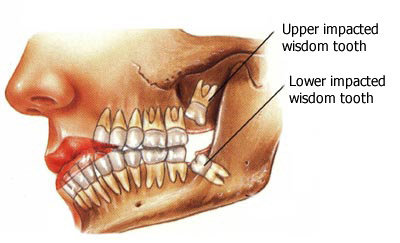Can pain in the jaw or teeth be an indication of a heart attack? How do I tell if a pain in my arm or shoulder is due to a heart condition?
These questions are quite common and frequently asked, and not always easily or correctly answered in magazines and journals. In fact, pain caused by an inadequate supply of oxygen to the heart can occur in many different forms. Although, once in a while, the location and description of the discomfort may be odd, but, fortunately, most of the time it is similar. The majority of the time patients describe a tightness, heaviness or constriction in the mid-chestor upper abdomen that appears to also be present in one or the other shoulder. The discomfort may also be noted in the upper biceps, elbow and wrist (on either side) and on occasion may feel like it is “going through” to the back. Heart pain can also be noted in the jaw and teeth. It is more common for heart-related discomfort to affect the lower jaw than the upper jaw. Occasionally, the discomfort will not affect the chest or upper abdomen at all.
The reason for heart pain is an inadequate amount of blood flow reaching an area of the heart. Our nervous system senses this as “pain” or “discomfort” most of the time. Our bodies do not always tell us the cause, or the organ that is the source of the problem. So, we have to look carefully at the things that relieve the discomfort, or increase it. If simple motions of the arm, shoulder, or jaw make things worse, it is probably not due to the heart. If rotating the muscles of your trunk (twisting from side to side) make things worse, it is not likely to be due to a heart problem. If pressing on a trigger point causes exquisite discomfort, it is also not likely a heart problem. If taking a deep breath makes things worse, it is not likely that a heart attack is the problem.
On the other hand, if walking fast aggravates the issue, or causes shortness of breath, I would be concerned. If the discomfort persists even when lying quietly, I would be concerned. And, if you are getting short of breath for any reason I would be concerned. On this latter point, shortness of breath is not the same as sighing. Sighing is more likely due to anxiety.
With respect to the question about tooth or jaw pain, when it is the only symptom, it is more often associated with temporomandibular joint (TMJ) dysfunction than heart pain. This is caused by misalignment of the teeth, or by manipulation of the jaw in an abnormal fashion (we can do this by “making funny faces”, or by nervous tics). If making chewing motions or moving your jaw hurts, it is more likely that the discomfort has nothing to do with your heart. Pain in the upper teeth also can indicate other conditions, such as a sinus infection or trigeminal neuralgia. It's important to get evaluated by your doctor or dentist to know the cause of your symptoms.
It cannot be emphasized enough that a heart attack can have symptoms other than chest pain and these symptoms should be checked immediately. I have had numerous patients sent to me for “unusual pains.” The classic example is the patient with lower dentures that is having “tooth pain” while walking after heavy meals. This one was, indeed, cardiac.
If you are at risk by virtue of age, family history, high blood pressure, high cholesterol, smoking history, etc, it is better to be safe than sorry and have yourself checked by a health care professional. Pain should be respected; it is evidence that there is something wrong. Even if it is not cardiac, it deserves your attention. While a broken rib may heal itself, a torn rotator cuff or TMJ problems won’t.
by Dr. Larry Weinrauch

















